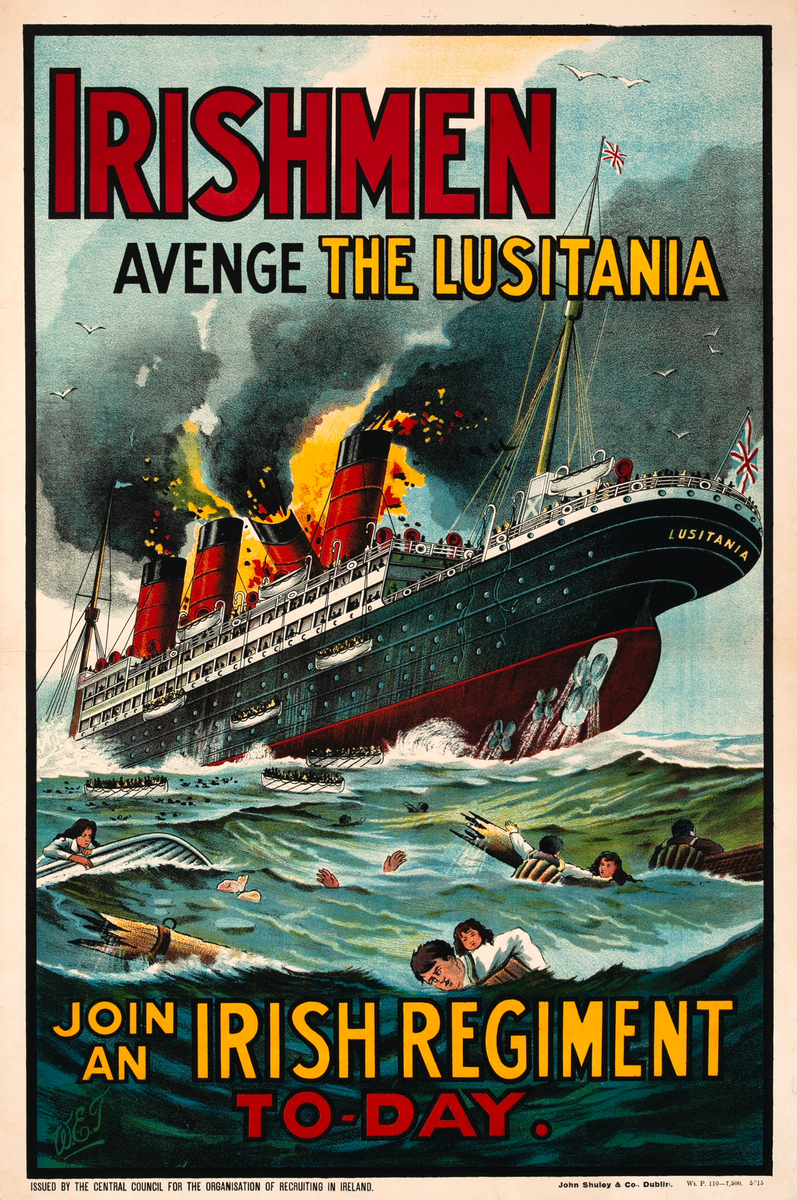
Irishmen Avenge the Lusitania Join an Irish Regiment To-Day Original WWI Irish Recruiting Poster
- 1915
-
19 1/2 x 30 inches ~ (48 x 76 cm)$5,500
- Linen backed
Linen backing is the industry standard of conservation. Canvas is stretchered and a sheet of acid free barrier paper is laid down. The poster is then pasted to the acid free paper using an acid free paste. This process is fully reversible and gives support to the poster. A border of linen is left around the poster and can be used by a framer to mount the poster so that nothing touches the poster itself.
The price of this poster includes linen backing.
- Add to Cart Add to Wishlist E-Mail Us About This Poster
Extremely rare and graphic poster of the RMS Lusitania after being struck by a torpedo. As the ship sinks, the bow is submerged and the stern raised clear of the water. Fires rage about her funnels and superstructure. Lifeboats, filled with passengers, are launched from the vessel, with others scattered in the waters. Some passengers drowning as others desperately cling to floating debris.
On August 4, 1914, President Woodrow Wilson formally proclaimed the United States neutral in World War I. Although many in the United States were born in Europe or were the children of European immigrants, the majority wanted to keep out of the war.
Upon their declaration of war, England established a naval blockade of Germany to prevent merchant ships from delivering much-needed war supplies and food. Although the United States objected to the disruption of trade, England persisted. In response to the blockade, on February 4, 1915, Germany declared the waters around Great Britain a war zone. With this declaration, German submarines began to sink merchant ships without warning to hinder the flow of supplies into Great Britain.
On May 7, 1915, German submarine, SM U-20 sank the British ocean liner RMSLusitania off the coast of Ireland. TheLusitania left New York City for Liverpool, England with 1,962 people on board. News of the sinking and 1,198 casualties, some of who were United States citizens, shocked and outraged many. RMS Lusitania became an effective propaganda tool for Great Britain and the United States. Pritzker Military Museum and Library
Issued by the Central Council for the Organisation of Recruiting in Ireland
Wt. P. 110-7,500. 5/'15



